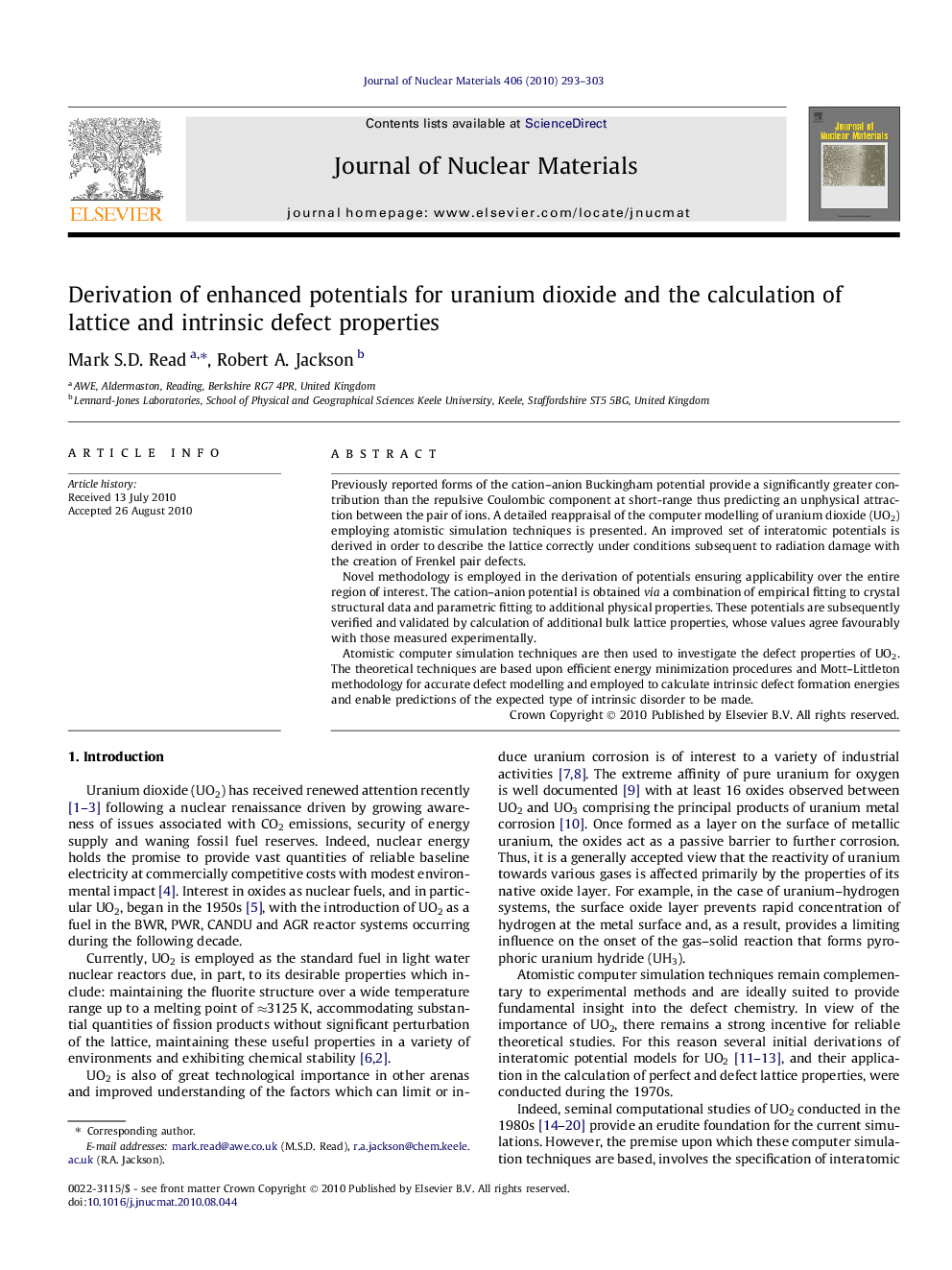| Article ID | Journal | Published Year | Pages | File Type |
|---|---|---|---|---|
| 1567128 | Journal of Nuclear Materials | 2010 | 11 Pages |
Previously reported forms of the cation–anion Buckingham potential provide a significantly greater contribution than the repulsive Coulombic component at short-range thus predicting an unphysical attraction between the pair of ions. A detailed reappraisal of the computer modelling of uranium dioxide (UO2) employing atomistic simulation techniques is presented. An improved set of interatomic potentials is derived in order to describe the lattice correctly under conditions subsequent to radiation damage with the creation of Frenkel pair defects.Novel methodology is employed in the derivation of potentials ensuring applicability over the entire region of interest. The cation–anion potential is obtained via a combination of empirical fitting to crystal structural data and parametric fitting to additional physical properties. These potentials are subsequently verified and validated by calculation of additional bulk lattice properties, whose values agree favourably with those measured experimentally.Atomistic computer simulation techniques are then used to investigate the defect properties of UO2. The theoretical techniques are based upon efficient energy minimization procedures and Mott–Littleton methodology for accurate defect modelling and employed to calculate intrinsic defect formation energies and enable predictions of the expected type of intrinsic disorder to be made.
